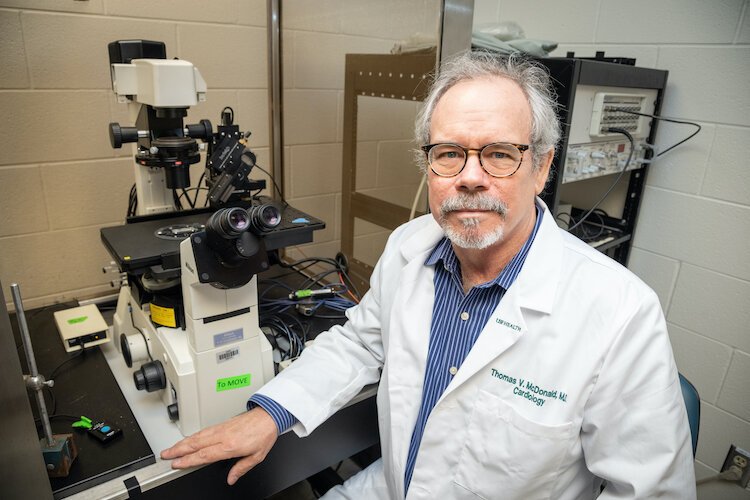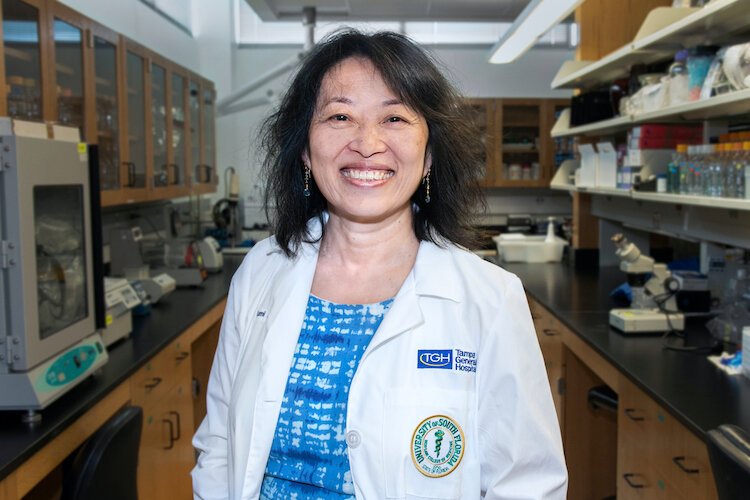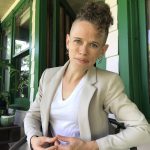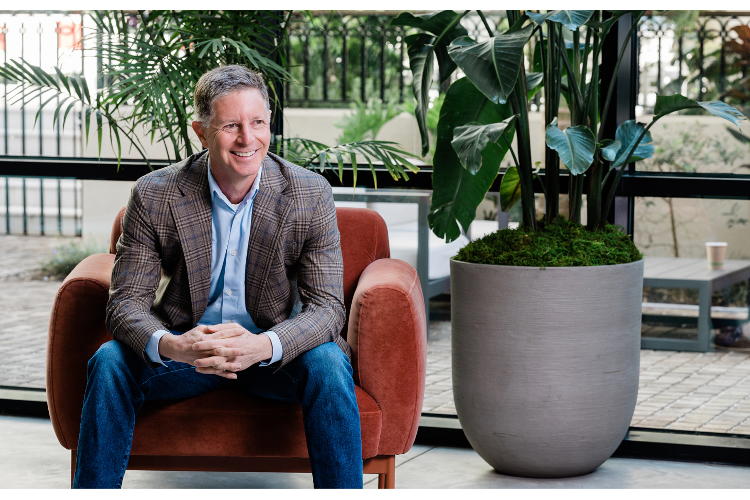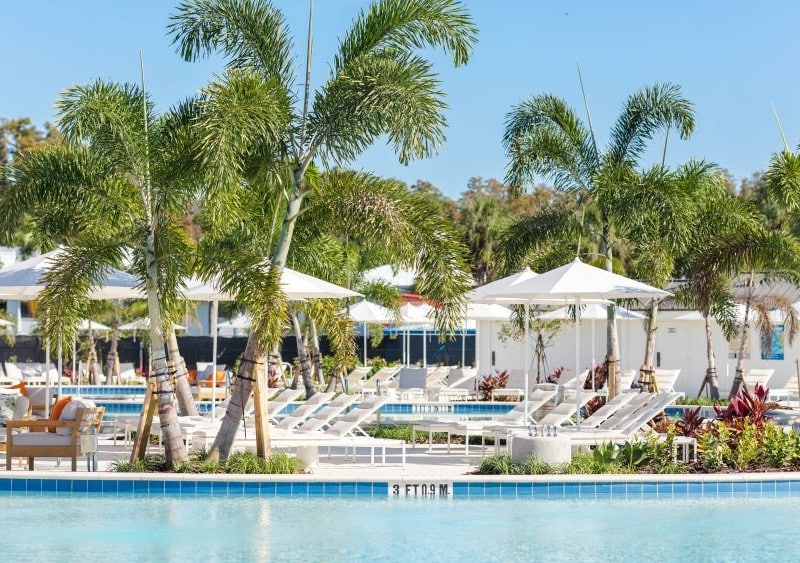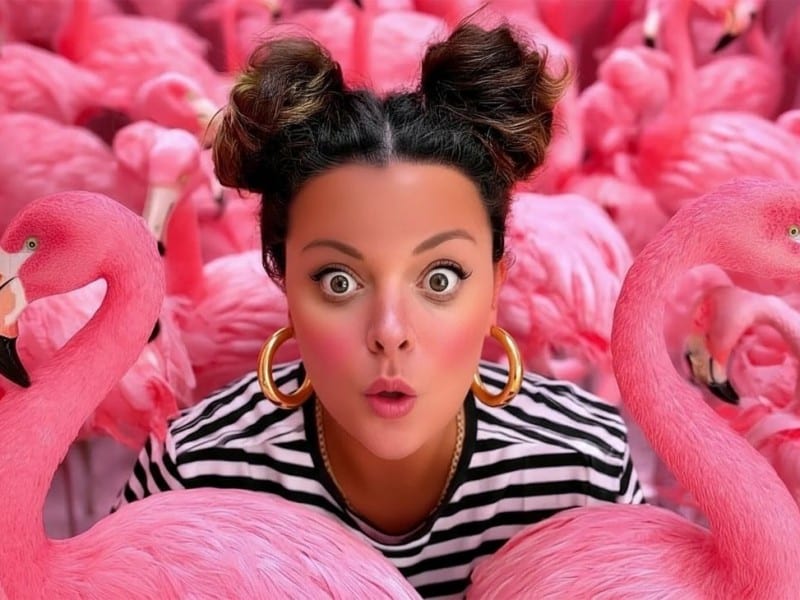Chemical glow from fireflies could help trace spread of COVID-19
USF scientists produce a glowing COVID-19 pseudotype to study susceptibility factors and disparities across diverse populations.
Luciferase, the enzyme that gives fireflies their glow, is poised to shed light on COVID-19 susceptibility factors across different ethnic groups, genders, and populations with pre-existing cardiovascular conditions in research currently underway at the University of South Florida.
Principal investigator, Cardiologist Dr. Tom McDonald of USF’s Morsani College of Medicine, Health Heart Institute, is joined by co-investigators Dr. Kami Kim, Professor of Medicine and Director of USF Division of Infectious Diseases & International Medicine at Tampa General Hospital, and Dr. Michael Teng, Virologist and Professor of Medicine at the Morsani College of Molecular Medicine.
Backed by funding from USF’s COVID-19 Rapid Response Grant program, the study involves the creation of lab-grown human cell systems that researchers will infect with what Dr. McDonald calls a “sheep in wolf’s clothing” coronavirus pseudotype — a harmless, lab-grown proxy made using COVID-19 spike protein, and luciferase.
“Anything COVID-19 will invade, this [pseudotype] will invade. It will create COVID-19, but it will glow — so it’s something we can measure. It’s a powerful tool because it can very precisely tell us how easy it is for the virus to get into various cell types,” McDonald says.
Cardiologist’s cell repository may contain COVID-19 clues
Dr. McDonald arrived at USF in 2017 from the Albert Einstein College of Medicine and the Montefiore-Einstein Clinic for CardioGenetics, where he studied genetic factors in sudden cardiac death in families in the New York metro area. His lab at USF Health continues his research on genetic susceptibility to heart problems — primarily through the collection of blood samples from people across a variety of backgrounds, which his lab then uses to create human tissue samples that can be studied in a petri dish.
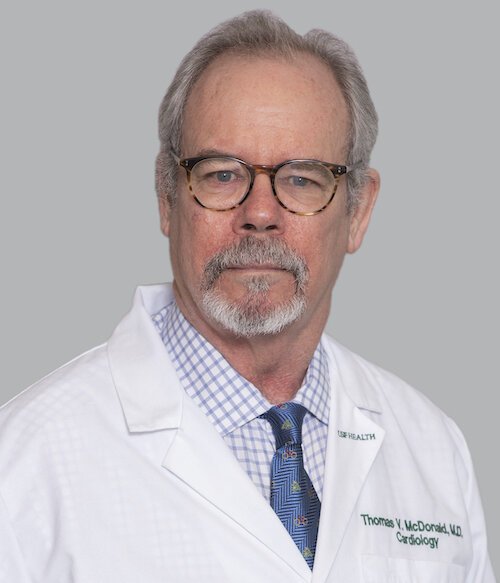
Dr. McDonald explains: “We take a blood sample and we reprogram the white blood cells into stem cells. Those stem cells are pluripotent, which means you can push them into different types of tissue. You can turn them into a nerve cell; a skin cell — any kind of cell. In our case, we turn them into heart cells. They beat in the dish and do everything that type of cell should do, and, importantly: They come directly from the person with the various genetic mutation.”
His lab has amassed a repository containing, to date, samples from more than 75 subjects across a spectrum of age, gender, and race — as well as a variety of pre-existing cardiovascular conditions. With the emergence of COVID-19, Dr. McDonald says, “we realized the tools and resources we had in our research laboratory were uniquely suited to address some important issues.”
Much of the COVID-19 research currently underway investigates epidemiological and socioeconomic factors, disparities in healthcare access, transmission vectors, and preparedness. His repository, Dr. McDonald says, provides a unique opportunity to, instead, explore what genetic, biological, and even common pharmaceutical-related factors might affect who gets sick and who dies from the novel coronavirus.
“There are certain epidemiological characteristics of certain disease and death with COVID-19. In addition to age, which we’re not looking at:
- Men get sicker and die more often from COVID-19 than women.
- African American and Hispanic people get sicker and die more often from COVID-19 than Caucasians and Asians.
There is also uncertain info and recommendations on the use of angiotensin receptor inhibitors and blockers — commonly used heart medications — over the course of the disease. These are things we’re looking at with our cell system,” says Dr. McDonald.
Creating a “sheep in wolf’s clothing” coronavirus
The petri dish tissue samples created from Dr. McDonald’s repository will be infected with a COVID-19 pseudotype created in Dr. Teng’s lab using the well-studied vesicular stomatitis virus (VSV), glowing luciferase, and COVID-19 spike protein — the protein on the surface of a virus that allows it to invade human cells.
“You can engineer the spike protein into the VSV so that on the surface, it looks like COVID-19, but on the inside, it’s not. All it is is luciferase — but it’s in the form of a virus,” McDonald says.
“Just because you put a virus into cells or tissues, doesn’t mean you have a way of knowing or measuring it in any quantitative way — unless you have a reporter. It wants something to pop out at you and say, ‘a-ha, that’s where you have the virus!’ With luciferase engineered into the VSV — if the VSV gets into a cell, it will give off light.”
In line with USF’s Rapid Response grant program objectives, Dr. McDonald anticipates having reportable info within the next two months and wrapping the project within the next six — but his team will be prepared to move beyond the pseudotype virus to the real thing, should the data collected in their initial study warrant a deeper investigation.
At Tampa General, Dr. Kim’s lab is in the process of isolating live samples of the COVID-19 virus that could be compared against the VSV pseudotype in the future.
“Pseudotypes will only tell you if a virus gets into a cell. What it doesn’t tell you: What happens to that cell if a real COVID virus gets in and starts replicating and doing what it does? If we, for instance, see that under certain circumstances it gets into heart cells easily — there’s not a whole lot of data on that. That’s the case where we’d want to use the live virus to then see what happens after its invasion in those cells,” McDonald says.


